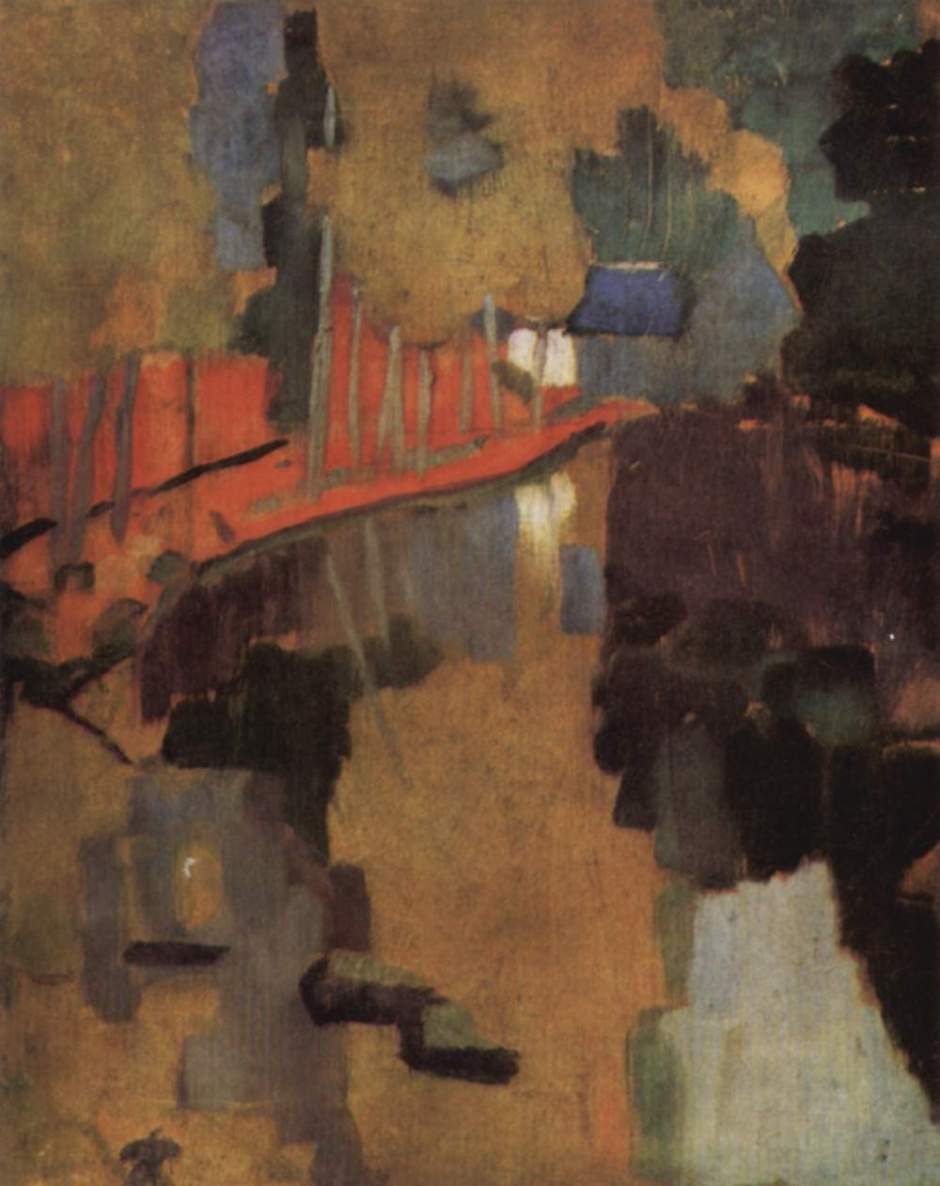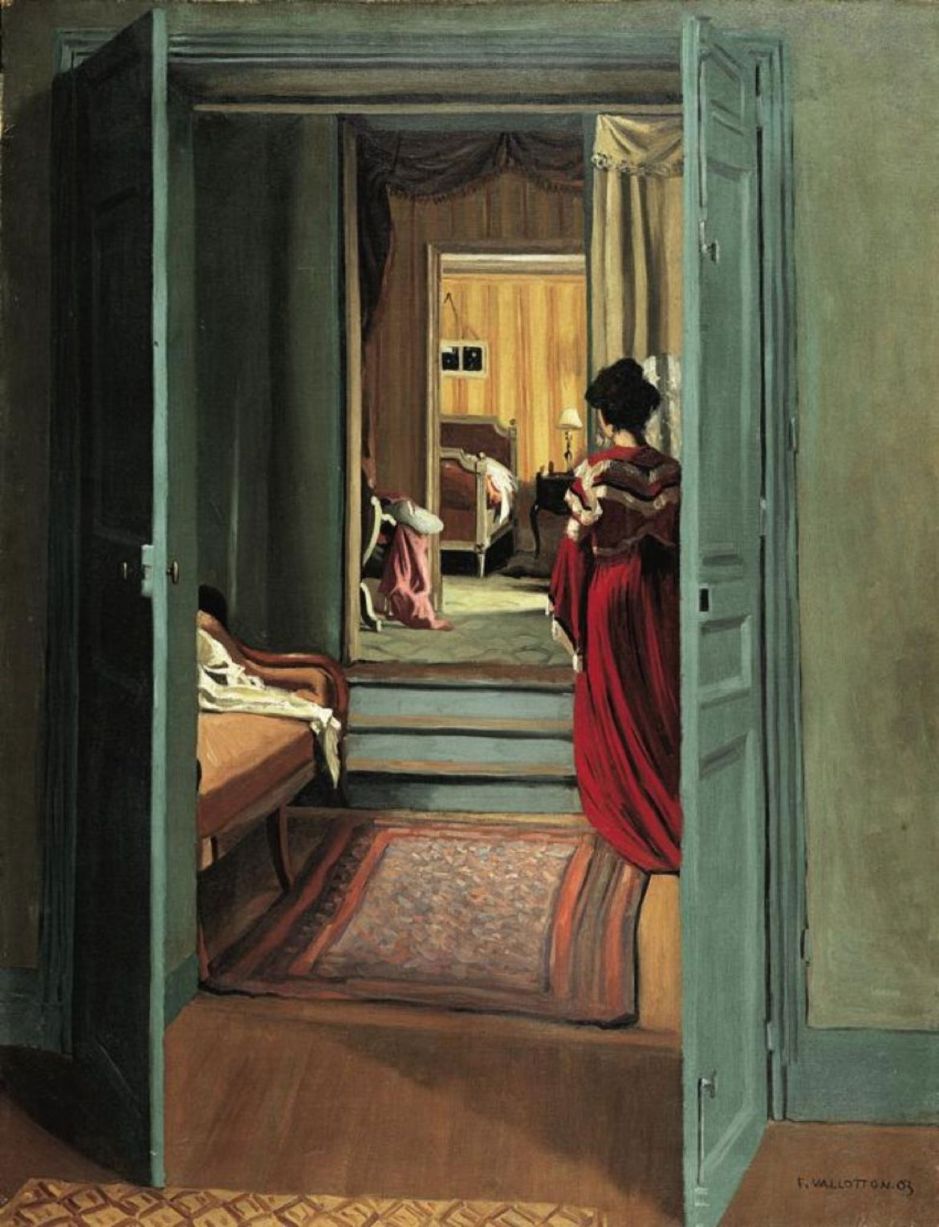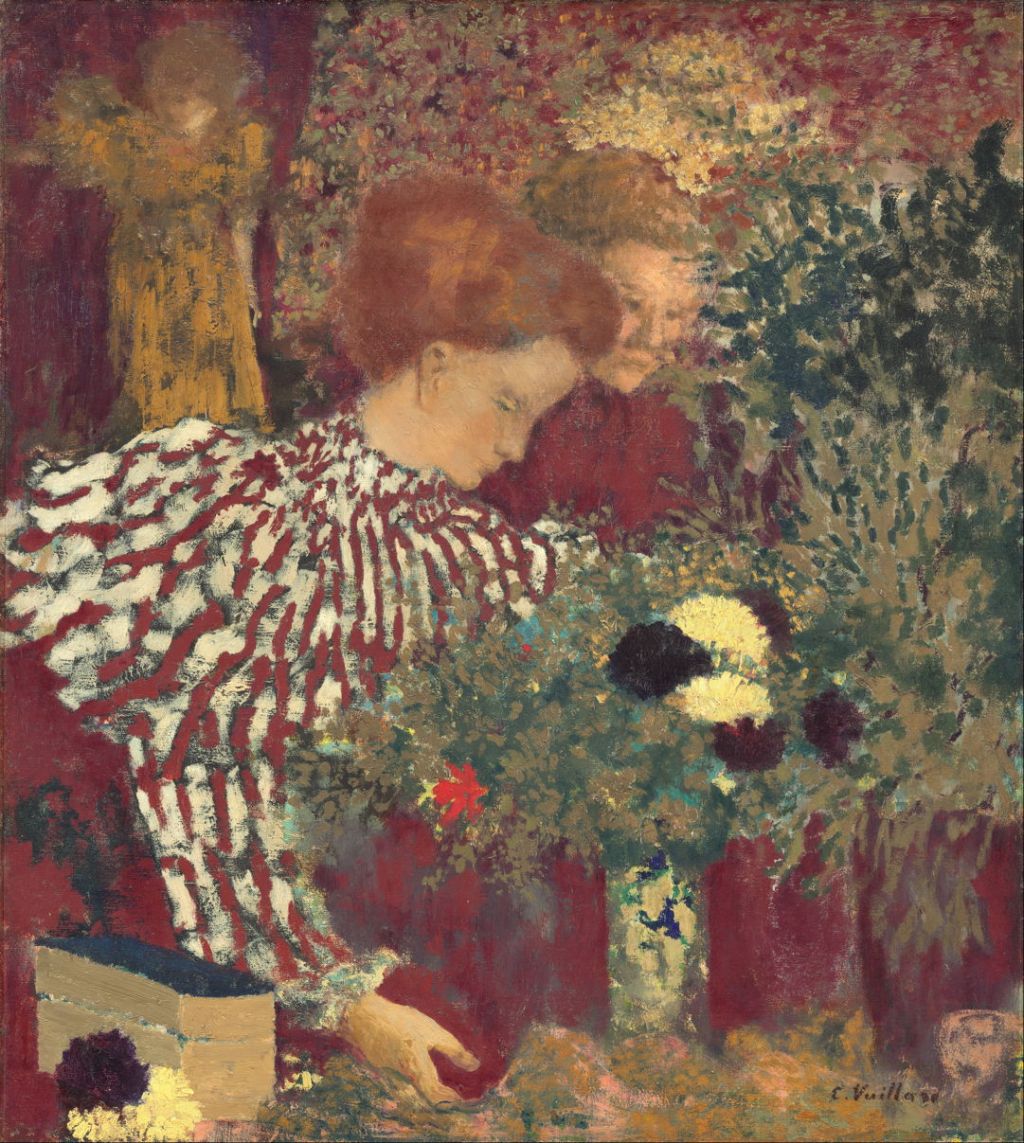There were many movements in art during the nineteenth century. Some, like Impressionism and the Pre-Raphaelites, are now well-known and celebrated in exhibitions, books, even movies. Others, like the Nabis, are today little-known. Unless you visit somewhere like the Musée d’Orsay in Paris, with its large collection of Nabi works of art, you could easily miss them.
Over the last four months, I have been looking here at each of the Nabis in turn, and piecing together their story and a little of their work. This is a brief summary of those articles, with a full set of links so that you can follow up matters of detail.
The Nabis make interesting comparison with the Pre-Raphaelites: they were mainly young men, freshly trained or still pupils. Although at its height the Nabi movement was close, intense and devoted, that didn’t last long, and its members developed their own distinctive styles and pursued individual careers, some of them like Pierre Bonnard becoming of great international importance. Most remained close friends, and continued to collaborate on later painting projects.
Unlike the Pre-Raphaelites, the Nabis had significant impact on painting internationally, which lasts even to today. The personal relationships of the Pre-Raphaelites were also intertwined and fraught; if anything, the Nabis had an almost religious approach to their art, and several remained close to the Catholic church throughout.
Article: 1 Beginnings
Although many of the Nabis first met at school or during their art training, their early guide, and the real founder of the movement, was Paul Gauguin. He drew a personal following during the latter half of the 1880s at Pont-Aven in Brittany. Prior to that, most of the Nabis had been fairly conventional realists, and hadn’t even been caught up in the Impressionist movement.

Gauguin led the young Paul Sérusier to paint the single most radical work of any of the Nabis, The Talisman, in 1888. Although adopted by the new movement as its touchstone, it is probably the least representative of their paintings.
Article: 2 Infancy
The group formed around 1889, inspired by the paintings of Gauguin and others which were exhibited outside the Exposition Universelle in Paris that year, and its manifesto was published by Maurice Denis the following year. By that time, Gauguin was moving on with his next project, his trip to Tahiti from 1891-93, and played little further part in the Nabi movement.
Other than Gauguin and ‘synthetism’, their influences were japonisme, decorative art, and (as so often is the case) trying to return to the ‘purity’ of more ancient painting.

Characteristic of their style is the use of muted colour, richly decorative patterning particularly of textiles, which often ignored three-dimensional form, and flattening of depth.
Article: 3 Peak

At their height, in the mid-1890s, the Nabis exhibited successfully and were the avant garde of painting in France. Many of their paintings showed, and concerned, the lives of women.
Article: 4 Divergence
From about 1896, although they continued to exhibit together and remained close, the Nabis’ style started to separate.

For example, Georges Lacombe was influenced by Hokusai’s print of The Great Wave, and he was one of several who concentrated on views of Brittany. Not only did their styles diverge, but their themes and motifs grew different too. They exhibited together in 1897, but had already started travelling independently, bringing them into contact with different influences.
Their final exhibition as a group was in 1900, when only Bonnard, Denis, Ibels (a print-maker and illustrator), Roussel, Sérusier, Vallotton and Vuillard remained Nabis.
Article: 5 Destinations – Bonnard, Vuillard, Denis, Sérusier

By 1906, although several remained close friends, the Nabi movement was long gone. Several continued to ‘keep the faith’ and their later works still showed Nabi influence. Most moved away from muted colours, though, and quickly used similar high chroma as had become popular with other artists at the time.

Pierre Bonnard went on to become one of the most important independent painters of the first half of the twentieth century, and his work remains highly influential. Even in his late paintings, like Nude in Bathtub painted in about 1938-41, he shows Nabi traits.
Article: 6 Destinations – Roussel, Vallotton, Ranson, Lacombe, Rippl-Rónai
Others may not have achieved the fame of Bonnard, but deserve to be better known.

Ker-Xavier Roussel’s pastels are some of the finest of the twentieth century.

Félix Vallotton painted enigmatic interiors, classical myths, and finally timeless landscapes.

Perhaps the most radical of all is József Rippl-Rónai, though, whose ‘corn style’ was the foundation of modern Hungarian painting.
I have written accounts of the careers and works of each of the Nabis who painted:
Meyer de Haan, ‘Dutch’
The Dutch Nabi: Meijer de Haan
Maurice Denis, with ‘beautiful icons’
The beautiful icons of Maurice Denis 1
The beautiful icons of Maurice Denis 2
Georges Lacombe, ‘sculptor’
Much more than the Nabi Sculptor: Georges Lacombe
Paul Ranson, ‘more Japanese than the Japanese Nabi’
Paul Ranson: the heart of the Nabis 1
Paul Ranson: the heart of the Nabis 2
József Rippl-Rónai, ‘Hungarian’
József Rippl-Rónai 1: The Hungarian Nabi
József Rippl-Rónai 2: Father of modern Hungarian painting
Ker-Xavier Roussel
A Peculiar Beauty: the paintings of Ker-Xavier Roussel 1
A Peculiar Beauty: the paintings of Ker-Xavier Roussel 2
Paul Sérusier, ‘with the shiny beard’
Paul Sérusier: 1 The Talisman
Paul Sérusier: 2 Harvest
Félix Vallotton, ‘foreign’
One of the most versatile, unpredictable and fascinating painters of his period.
Paintings of Félix Vallotton 1 The Foreign Nabi
Paintings of Félix Vallotton 2 Mysterious Interiors
Paintings of Félix Vallotton: 3 Myth and Mists
Paintings of Félix Vallotton: 4 War and the Land
Jan Verkade, ‘obeliscal’
Like an obelisk: Nabi paintings of Jan Verkade
Édouard Vuillard, ‘Zouave’ (North African infantry)
Le Nabi Zouave: Édouard Vuillard 1
Le Nabi Zouave: Édouard Vuillard 2
Pierre Bonnard, dubbed ‘very Japanese’
One of the major artists of the late nineteenth and early twentieth centuries, I have a long series devoted to his career and work, now that the latter has come out of copyright.
Japonisme and the Nabis, 1888-1892
Oil sketching and Marthe, 1893-1895
Bustling Paris and the bedroom, 1896-1899
Light and Travel, 1900-1904
Pleasure and Patrons, 1905-1907
Light and Mirrors, 1908-1909
Le Midi, 1910-1911
Form or Colour, 1912-1914
Tea, coffee, and models, 1915-1917
Domestic Symphony, 1918-1920
Beaches and Bathing, 1921-1923
Marriage and the Coast, 1924-1926
Fruit and French Windows, 1927-1930
Bathrooms and tabletops, 1931-1936
At home with Marthe, 1937-1943
Mimosa and memories, 1944-1947
Marthe
Pierre Bonnard’s Journey into Light: Landscapes 1894-1946
On Reflection
The world beyond
I hope that you come to enjoy the paintings of the Nabis as much as I have.

